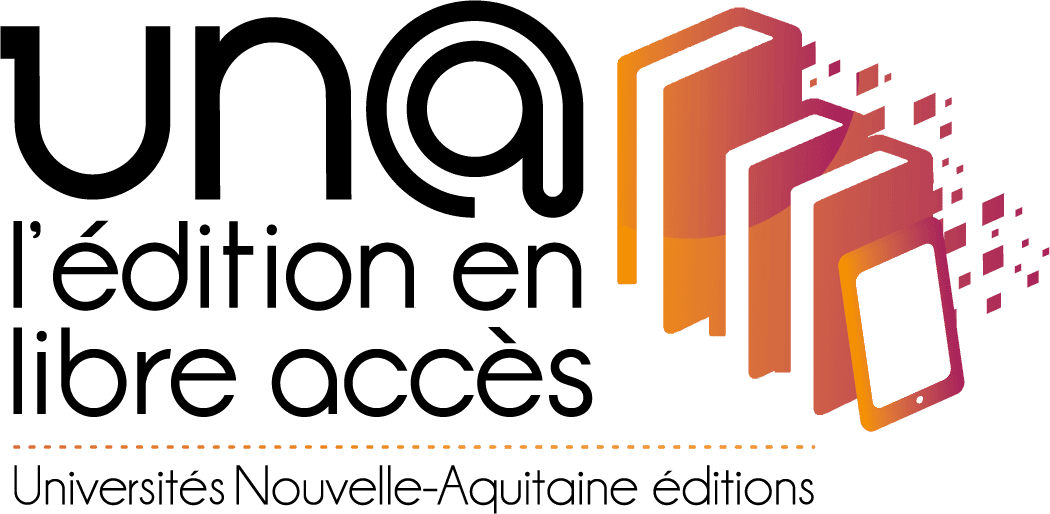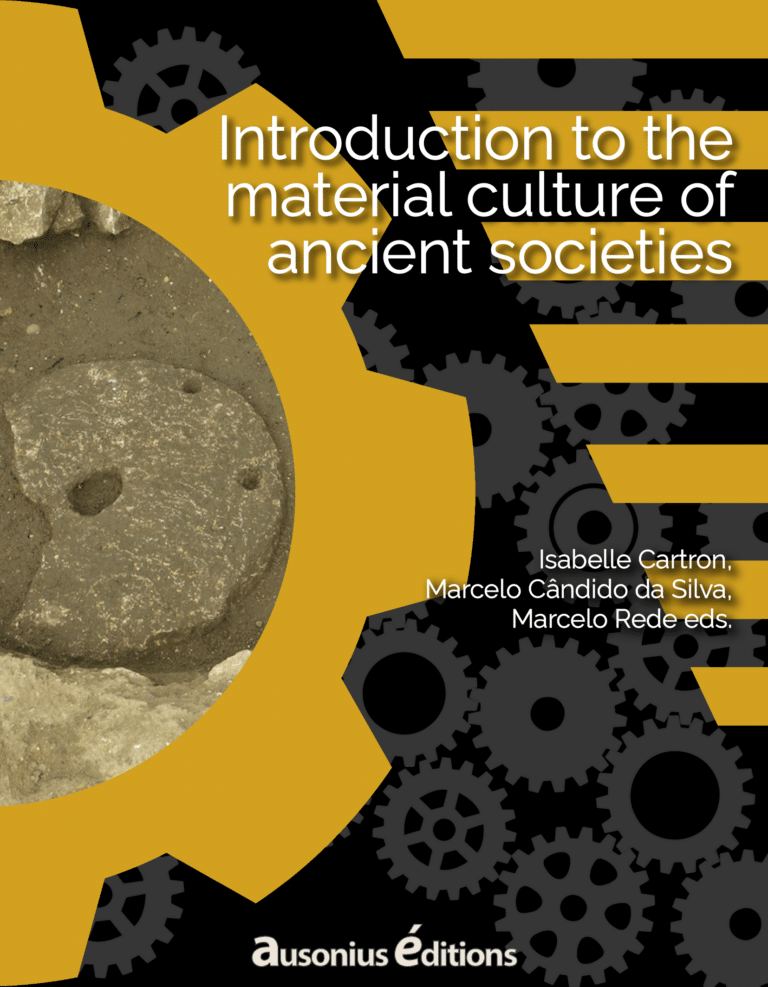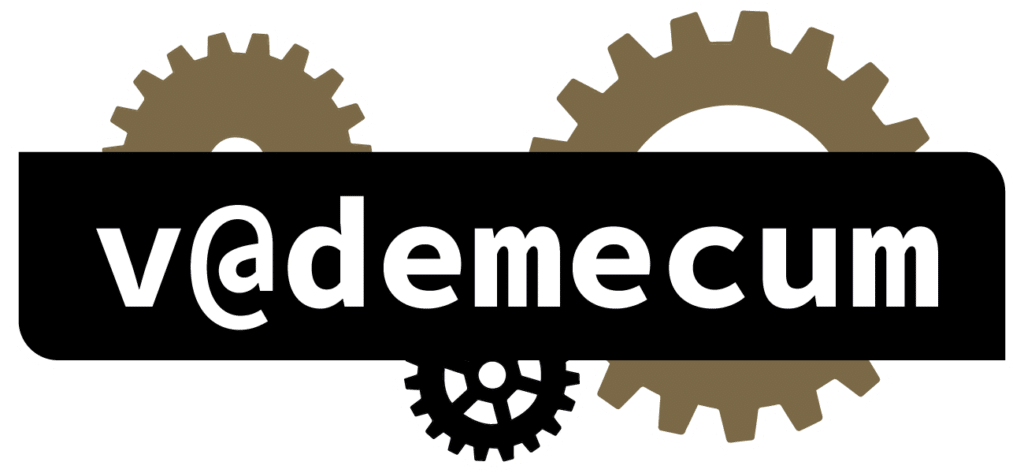Clothing in an Archaeological Context: Textile Remains Approach in situ
In ancient societies, clothing is mostly made of organic materials. Their perishable nature, difficult to identify after several centuries underground, make them archaeological artefacts still often relegated to the background of the research. Indeed, the metal artefacts characteristic of clothing attachment or ornamental systems, has often detained the attention of researchers. These elements, which are an integral, but ancillary, component, of the garment, were, for the most part studied separately of the “disappeared” organic elements. Since the end of the 1990s and the beginning of the 2000s, various contributions have produced historiographical and methodological summaries, mostly about the excavation and the study of organic remains in burials.1 The interest in organic remains is no longer to be demonstrated, but the methodological application on the field is still problematic and sometimes non-existent.
Organic remains can take many forms, which are fully dependent of their degradation environment, their sedimentary components, and the used textile fibers. Leathers, furs, or textiles can conserve a non-altered organic form. Although the most recognisable, it is not the most found typology on site. All other form of preservation is said to be, altered or damaged. Preserved textiles can be found in carbonised form or, imprinted on certain ductile materials, such as clay. Thus, the mineralisation of textile turns out to be the main form of conservation found in sepulchral context. This process can be due to the surrounding sediment or by a prolonged contact with corrosion products of metallic artefacts. A sepulchral environment is, indeed, ideal for a rapid corrosion of metals and, therefore, a better preservation of textiles in this form. D. Henri (2019) highlighted that almost 99% of the metal objects discovered in funerary context retained organic materials when in contact with it. Thereupon, only a strict study protocol applied in the field and in the laboratory, allows a global approach for the study of clothing practices.

It cannot be overstated that although archaeology is a science to study our heritage, it is also a necessarily invasive discipline. Thus, the choices made during the excavation have a direct impact on the data conservation and its informative potential.2 The burial environment, conducive to the conservation of materials said “sensitive”, must be the subject of a precocious dig starting from the initial phase of the excavation. Indeed, the excavated artefacts, of any material and conservation state, are subjected to a sudden chemical and physical instability. This action leads to more and less rapid and visible changes, which, in most cases, causes a data loss.
Except for precautions related to time limitations of the drying process or of the direct exposure, to weather or climatic conditions, for the artefacts; recording during excavation or in laboratory must be systematic, complete, and as meticulous as possible, in order to limit the losses of information.3 The recording must be carried out both through the multiplication of technical procedures and the multiplicity of pictures from different angles. The objective is to record datas such as colour, delicate textiles, in situ shapes, assemblies or elements associations; that are the most fragile and sensitive to environmental changes. A good recording is necessarily time-consuming, but allows a taphonomical approach to the burials, opening possibilities for detailed analysis and interpretation of funeral practices. This type of study is related to on-going reflexions about the conservation process of archaeological remains. Considering the decomposition of the corpse facilitates the understanding of its initial position and of the associated artefacts and structures. Indeed, the position of clothing artefacts recorded when dug is directly related to the movements produced by the decomposition. A close collaboration between anthropologist and material specialist is, thus, essential. Other informative elements on artefacts can be found in the position of each bone and potential later disturbances in the grave. This documentation permits an objective understanding of how and why the clothing remains moved overtime.

Technical Study and Informative Potential of the Sepulchral Clothing Remains
One of the fundamental facets of post-excavation process, for metal and textile remains, is the technical approach of their studies. Macroscopic observation, carried out mainly with a binocular magnifier, offers possibilities of indications related to overall characteristics. Are recorded for fabrics: general assemblies and arrangements; shape; colour; weave; thread count; distinctive elements such as selvedge, seams, folds, and possible overlaps; as well as yarn structure data such as twist direction and degree of twist and yarn size. It is only in a second time that the type of fibre used in the textile can be characterised using an optical microscope or a scanning electron microscope.4
All the technical data combined with the restitution of the remains location (textiles and objects) in the grave, offers significant potential of information well beyond the technical and technological sphere. These closely intertwined issues enable us to discuss the funeral gestures and care given to the deceased. Thus, the precise recording procedure is conducive to the discussion on the remains’ function at the time of burial. In addition to the possible identification of some clothing or clothing accessories, organic remains found isolated or on metal artefacts can be originated from surrounding elements. Mortuary sheets, a shroud or an alms purse can be excavated and should be considered. Thereby, only a rigorous methodology throughout the study process can distinguish them from clothing. On the other hand, pieces of clothes may also be placed beside the body or on the container and are likely to be either hidden or visible during funerals. Moreover, interpretation of the deposits associated with some artefacts, often described as “in function”, raises some questions especially when closing systems, such as a pin or a pin catch of the fibula, are missing or altered. In such cases, all information relating to the garments of the deceased must be considered as part of the funeral discourse (). In fact, clothing practices – particularly in a funeral context – are not strictly related to the protection of the body.5 In all societies, garments must be seen as a communication tool at the centre of community and collective phenomena. Its identity character thus places it as an active participant in the construction and transmission of identities. Graves should be understood in the light of the sepulchral practices of the living. This way, the remains from the burials do not reflect the identity of the deceased, but reveals a picture that shows the different interests of the social group, according to political or ideological choices.6 The study of mortuary clothes is thereby part of a global approach to ancient societies.
Read more
References
- Bartel, A. & Nowak-Böck, B., 2012: Hinweise zum umgang mit organischen materialien während der Ausgrabung. Bayerisches Landesamt für Denkmalpflege, URL: http://www.blfd.bayern.de/medien/organische_materialien_05_2012.pdf.
- Bartholeyns, G., 2018: “Le tiers terme: le vêtement et la rationalité politique du corps au Moyen Âge”, Revue des langues romanes, CXXII, n. 1, p. 125165, URL: https://doi.org/10.4000/rlr.592.
- Bizot, B. & Signoli, M., 2009: Rencontre autour des sépultures habillées, Actes des journées d’étude organisées par le Groupement d’Anthropologie et d’Archéologie funéraire et le Service Régional de l’Archéologie de Provence-Alpes-Côte d’Azur : Carry-le-Rouet (Bouches-du-Rhône), 13-14 décembre 2008, Gap.
- Buhrer-Thierry, G., 2018: “La beauté, le vêtement et l’apparence : des armes genrées dans la compétition ?”, in: Joye, S. & Le Jan, R. (org.), Genre et compétition dans les sociétés occidentales du haut Moyen Âge IVe-XIe siècle, Collection Haut Moyen Âge 29, Turnhout.
- Cardon, D., “Archéologie des textiles : méthodes, acquis, perspectives”, in: Cardon, D. & Feugère, M., (org.), Archéologie des textiles : des origines au Ve siècle, Actes du colloque de Lattes, octobre 1999, Montagnac.
- Carré, F. et al., 2018: “L’étude des matériaux organiques dans les tombes du haut Moyen Âge (France, Suisse et Allemagne) : un apport majeur à la connaissance des pratiques funéraires et du vêtement”, Archéologie médiévale, 48, p. 37-99.
- Cassagne-Brouquet, S. & Dousset-Seiden, 2012: Genre, normes et langages du costume, Costumes, Clio. Femmes, Genre, Histoire 36.
- Desrosiers, S., 2000: “Textiles découverts dans deux tombes du Bas-Empire à Naintré (Vienne)”, in: Cardon D. & Feugère, M., (org.), Archéologie des textiles : des origines au Ve siècle, Actes du colloque de Lattes, octobre 1999, Montagnac, 195-207.
- Glynis, E., 1989: “Guidelines for dealing with material from sites where organic remains have been preserved by metal corrosion products”, in: Janaway, R. et al. (org.), Evidence preserved in corrosion products / New fields in artefacts studies. Proceedings of a joint conference between UKIC Archaeology Section and the Council for British Archaeology Science Committee, Leeds 1983, United Kingdom Institute for Conservation of Historic and Artistic Works, Occasional papers, 8, London.
- Henri, D., 2019: “Le ‘problème’ du textile archéologique : le point de vue d’une archéologue”, Cahier technique, 23, p. 68-71
- Janaway, R., 1983: “Textile fibre characteristics preserved by metal corrosion: the potential of S.E.M. studies”, The Conservator, 7, p. 48-52.
- Jolivet-Jacquet, S., 2009: “Vêtement et textile : sources et ressources”, Bulletin du centre d’études médiévales d’Auxerre / BUCEMA, 13, p. 293-302, URL: https://doi-org.ezproxy.u-bordeaux-montaigne.fr/10.4000/cem.11088.
- Jones, J. et al., 2007: “Guidelines for the Excavation of Archaeological Textiles”, in: Gillis, C. & Nosch, M-L. (org.), First Aid for the Excavation of Archeological Textiles, Oxford.
- Lejars, T. & Rapin, A., 2000: “Empreintes organiques et produits de corrosion : limites et contraintes des nettoyages”, in: Association des restaurateurs d’art et d’archéologie de formation universitaire (Paris) et al. (org.), La Conservation-restauration en archéologie : objets composites, traces et prélèvements, XVIe Journée des Restaurateurs en Archéologie, 25 et 26 juin 1998, Cahier technique de l’ARAAFU 5, p. 42-50.
- Marthon, V., 2005: “La question de l’identité à travers l’étude des pratiques funéraires”, Les petits cahiers d’Anatole, 19, p. 214.
- Masse, C., 1986: “Le ‘recrutement’ d’un ensemble funéraire”, in: Duday, H. & Masset, C. (org.), Anthropologie physique et archéologie. Méthodes d’étude des sépultures, Actes du colloque de Toulouse, 4-6 novembre 1982, Paris, p. 111-126.
- Médard, F., 2017: “L’étude des vestiges textiles : histoire, problématiques, moyens et priorités. L’exemple des nécropoles mérovingiennes du Nord de la France”, in: Leroy I. et al. (org.), Communauté des vivants, compagnie des morts, Actes des 35e Journées internationales d’archéologie mérovingiennes de l’AFAM, Douai, 9-11 octobre 2014, Mémoires 33, Saint-Germain-en-Laye, p. 139-153.
- Moulhérat, C., 2008a: “L’archéologie des textiles : une nouvelle discipline au service de la connaissance et de la compréhension des sociétés humaines”, L’actualité chimique, 318, p. 30-34.
- Moulhérat, C., 2008b: “Archéologie des textiles”, Les nouvelles de l’archéologie, 114, p. 18-23.
- Moulhérat, C., 2016: De nouveaux outils au service de l’étude des textiles archéologiques, Actualité des méthodes de terrain au Proche-Orient, Séminaire de recherche Archéorient UMR 5133, URL: https://www.canal-u.tv/video/archeorient/de_nouveaux_outils_au_service_de_l_etude_des_textiles_archeologiques.36587.
- Moulhérat, C. & Médard, F., 2008: “Les textiles mérovingiens : état des recherches et nouvelles découvertes dans l’Est de la France”, in: Guillaume, J. & Peutermann, E., (org.), L’Austrasie : sociétés, économies, territoires, christianisation, Actes des XXVIe Journées internationales d’archéologie mérovingienne, Nancy 22-25 septembre 2005, Nancy, p. 123-132.
- Rast-Eicher, A., 2000: “De la fouille à l’étude : la matière organique dans les tombes”, in: Cardon D. & Feugère M., (org.), Archéologie des textiles : des origines au Ve siècle, Actes du colloque de Lattes, octobre 1999, Montagnac.
- Rast-Eicher, A., 2016: Fibres. Microscopy of Archaeological Fibres and Fur, Budapest.
- Segard, M., 2017: “Le mausolée antique de Jaunay-Clan (Vienne) : protocole d’étude de sépultures en milieu-clos”, in: De Larminat, S. et al. (org.), Rencontre autour de nouvelles approches de l’archéologie et d’anthropologie funéraire, Actes de la 6e Rencontre du Groupe d’anthropologie et d’archéologie funéraire, 4-5 avril 2014, Publications du Gaaf 6, Reugny, p. 195-200.
Notes
- Glynis 1989, 37; Cardon 2000, 514; Jones et al. 2007, 529; Moulhera 2008a and 2008b; Moulherat & Médard 2008; Bizot & Signol & 2009; Bartel & Nowak-Böck 2012; Médard 2017; Carré et al.2018; Henri 2019.
- Janaway 1983; Masset 1986; Lejars & Rapin 2000.
- Rast-Eicher 2000; Desrosiers 2000; Segard 2017; Carré et al. 2018.
- Moulherat 2008a and 2008b; 2016; Rast-Eicher 2016; Carré et al. 2018.
- Jolivet-Jacquet 2009; Cassagne-Brouquet & Dousset-Seiden 2012, 718; Bartholeyns 2018; Bührer-Thierry 2018, 117-133.
- Marthon 2005.





